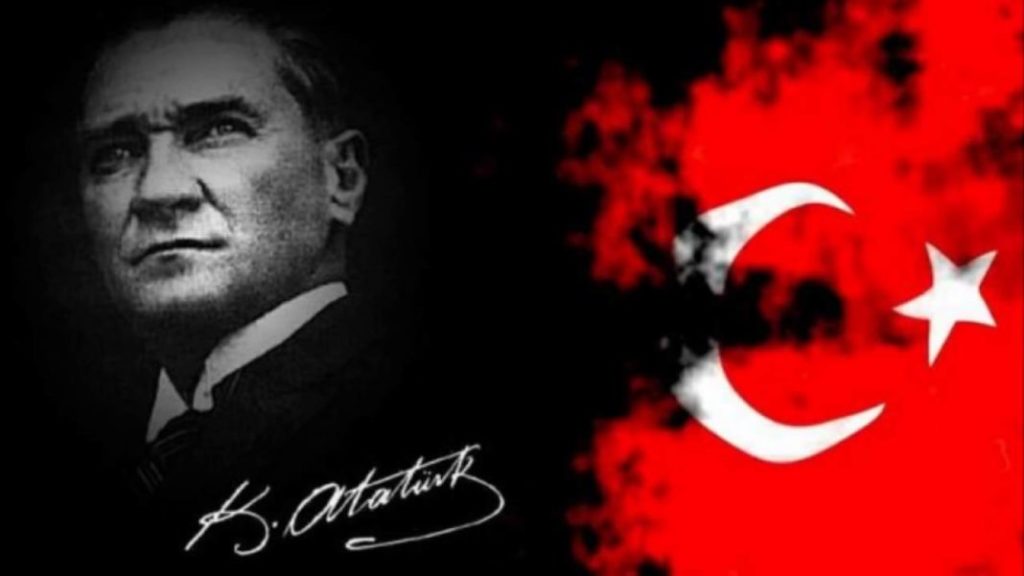The founder of the Turkish Republic and its first President, Mustafa Kemal Atatürk, remains one of the most influential leaders of the 20th century. Few historical figures have accomplished so much within such a brief span, profoundly transforming their country’s destiny and inspiring the world on a grand scale.
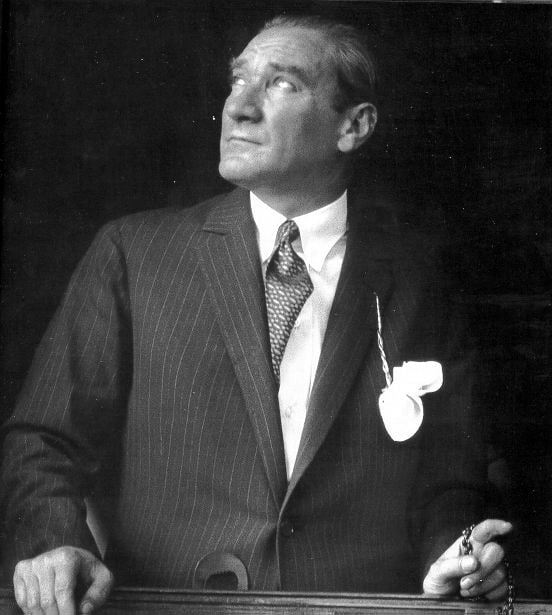
Modern Turkey owes much of its foundation to Atatürk—“Father of the Turks,” as he later became known. Revered across the country, his legacy is visible everywhere: statues of him stand proudly in every city, and his image is displayed on the walls of countless offices. For many Turks, showing respect for Atatürk is essential, and making light of his legacy is not tolerated.
Born plain Mustafa
Mustafa Kemal Atatürk was born plain Mustafa in Ottoman Salonica in 1881. How he acquired his second name has now become embedded in the Atatürk legend. Atatürk himself tells the story.
‘In preparatory school, I developed a special interest in mathematics. I soon equalled, and possibly even surpassed, our mathematics teacher in knowledge of the subject. I started working on problems well in advance of our lessons. I used to put questions in writing, to which my teacher would reply also in writing. The teacher’s name was Mustafa. One day he turned to me and said: “My boy, your name is Mustafa and so is mine. This won’t do. There must be some distinction. From now on you’ll be called Mustafa Kemal.” And that’s how I’ve been known ever since.’
The literal meaning of Kemal in Ottoman Turkish is ‘perfection’ and biographers have praised the mathematics teacher for his remarkable prescience.
A new era for Turkey
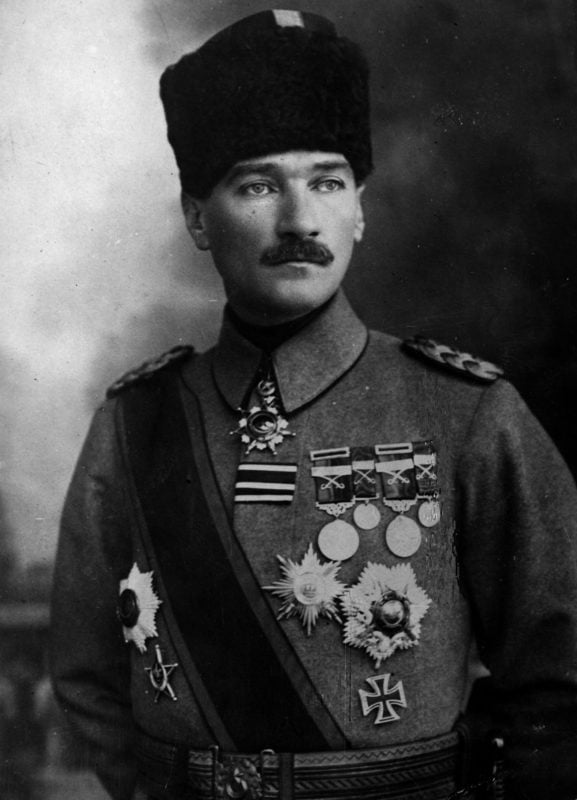
At the close of World War I, the Ottoman Empire, having allied with Germany, found itself occupied by the victorious Allied powers. The Ottoman government had been defeated, and the sultanate’s authority was shattered.
Amid this turbulent period, Mustafa Kemal, a respected young general known for his undefeated record in the war, emerged as the leader poised to guide Turkey into a new era. During the War of Independence, from 1919 to 1923, he became President of the Turkish Grand National Assembly, inaugurated on April 23, 1920. Alongside his Foreign Minister, İsmet Pasha (İnönü), he successfully negotiated the Lausanne Peace Treaty in 1923, which established Turkey’s national borders and secured international recognition of its sovereignty. On October 29, 1923, the Republic of Turkey was officially proclaimed, marking the dawn of a new era.
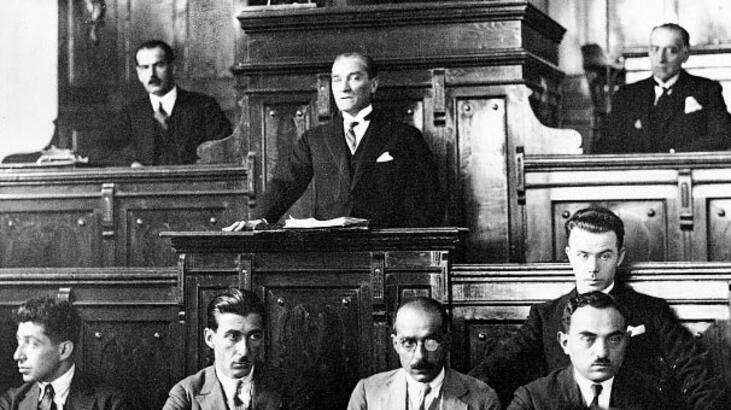
Becoming a modern nation
Mustafa Kemal launched a series of profound reforms to transform Turkey into a modern nation. Central to his vision was the separation of religion and state, which he saw as essential for progress.
Establishing a Secular State
Under Atatürk’s leadership, faith became a matter of personal choice. Sharia courts were replaced with secular courts, and the religious school system was dismantled. In 1937, secularism was formally enshrined in the Constitution, making Turkey the first predominantly Muslim nation to adopt a secular framework.
Embracing European Dress
Believing Turkey’s future lay with the West, Atatürk eagerly embraced modernity, including the adoption of European styles of dress. This shift symbolized Turkey’s commitment to a new, progressive identity.
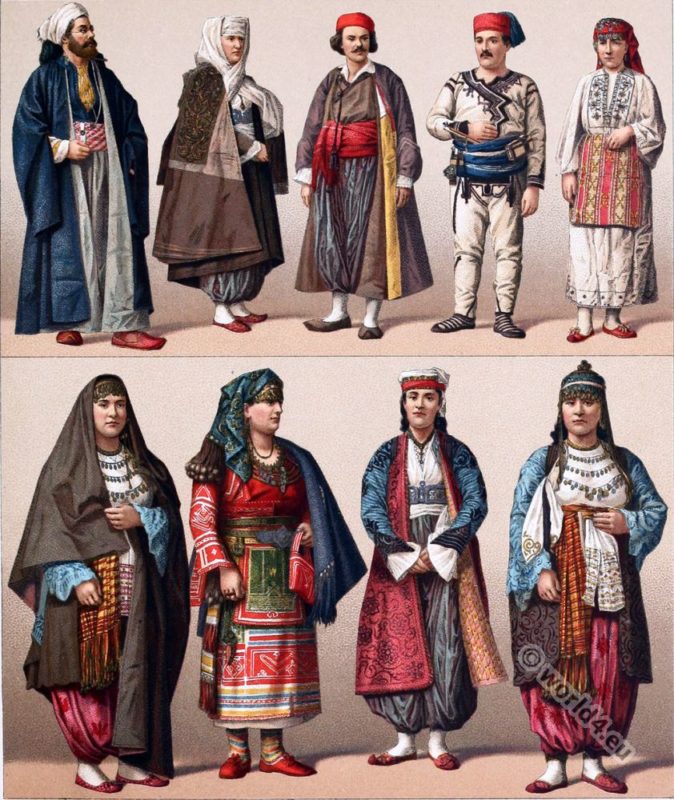
The Hat Law of 1925 introduced the use of Western-style hats instead of the fez.
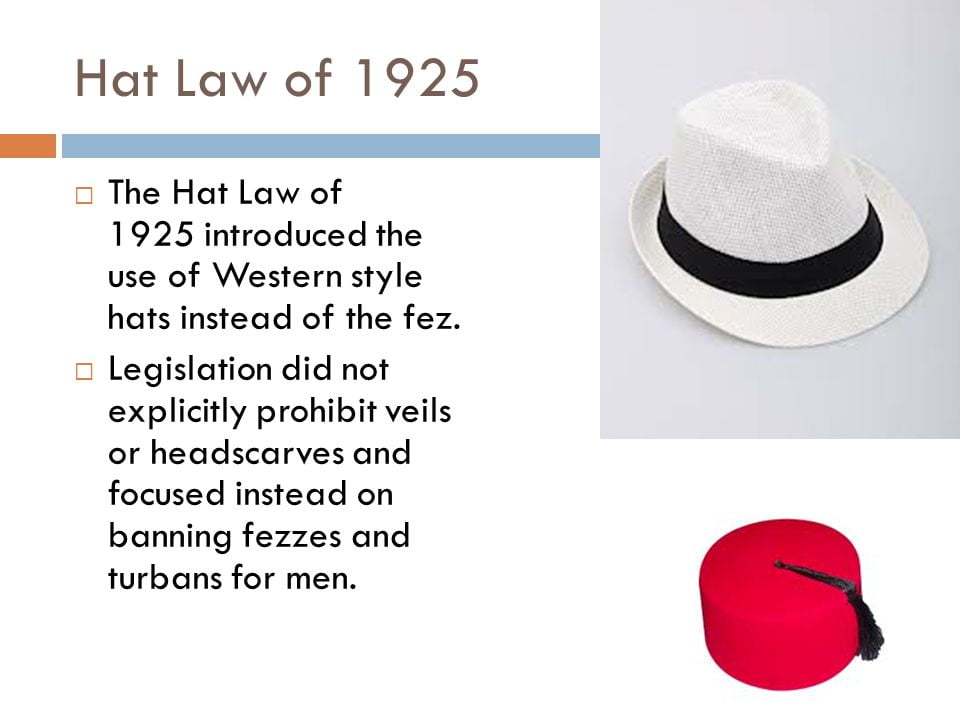
Time and date
In 1925 the International (rather than the Islamic) time and calendar systems were adopted.
A new language
“The cornerstone of education is an easy system of reading and writing. The key to this is the new Turkish alphabet based on the Latin script.”
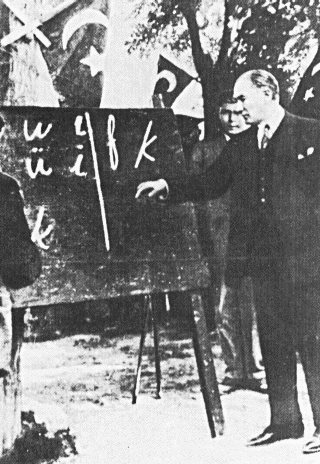
To boost literacy rates, the Ministry of Education developed a new Turkish alphabet, transitioning from the Arabic to the Latin script. By the close of the 1920s, Tutkey had fully embraced this new alphabet. With its 29 letters—8 vowels and 21 consonants—it eliminated the complexities of the Arabic script, which had been poorly suited to the Turkish language. This language reform allowed both children and adults to learn to read and write within months and made studying Western languages far easier and more effective.
Women’s rights
“Everything we see in the world is the creative work of women.”
Atatürk saw the role of women as crucial to the development of the new Republic. Polygamy was prohibited and he gave women the same rights as men. By 1930 women had been granted the right to vote and in the mid-1930s, 18 women were elected to the national parliament. Later, Turkey had the world’s first women supreme court justice.
In all walks of life, Atatürk’s Turkey has produced tens of thousands of well-educated women who participate in national life as doctors, lawyers, engineers, teachers, writers, administrators, executives, and creative artists.
The surname law
1n 1934, all citizens had to adopt a surname and Mustafa Kemal was given the name ‘Atatürk’, ‘Father of the Turks’.
The death of Atatürk
Atatürk passed away on November 10, 1938 at Dolmabahçe Palace in Istanbul. Atatürk had been suffering from cirrhosis of the liver, a condition that had worsened in his final months, despite extensive medical care.
On 8 November Atatürk fell into a final coma. According to Hasan Rıza Soyak, he addressed his last words to his doctor Neşet Ömer İrdelp. They were “Aleyküsselam” (Peace to you) – the Muslim reply to a greeting. Medical bulletins were issued again, and this time they did not conceal the gravity of the president’s illness. At five past nine on the morning of 10 November 1938, Atatürk died in his bedroom in Dolmabahçe palace. Three Turkish doctors, the commander of the presidential guard and the secretary Hasan Rıza Soyak were at his bed-side. At midday, the news was announced in an official communiqué. Order would be safeguarded, the government promised, and the republic would live on. The assembly was to meet to elect a new president. ~ Excerpt from Atatürk by Andrew Mango
The clocks in the palace were all stopped at 09:05, the time that he died. The clocks outside of his room now are set to the actual time in Turkey, but the clock in the room in which he died still points to 09:05.
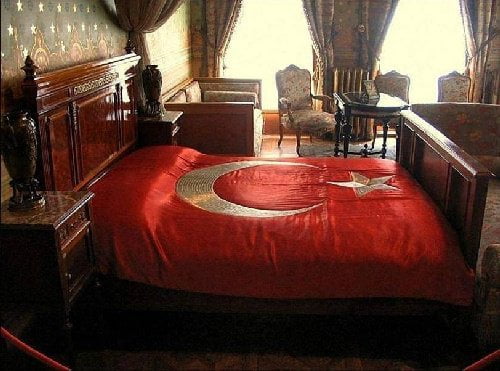
His death marked the end of an era for Turkey, as he was the architect of the nation’s independence and a transformative leader who had brought sweeping social, cultural, and economic reforms. Following his death, Turkey entered a period of national mourning, and millions across the country grieved his loss. His body was laid to rest temporarily at the Ethnography Museum in Ankara until his final interment in 1953 at Anıtkabir, a monumental mausoleum built in his honor.
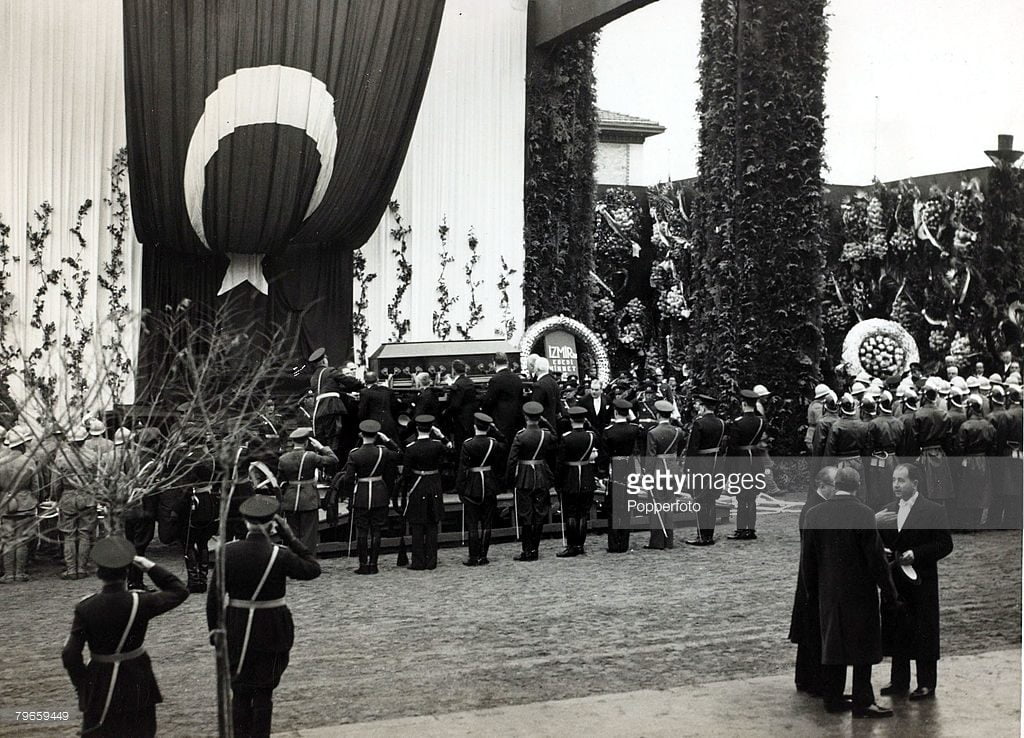
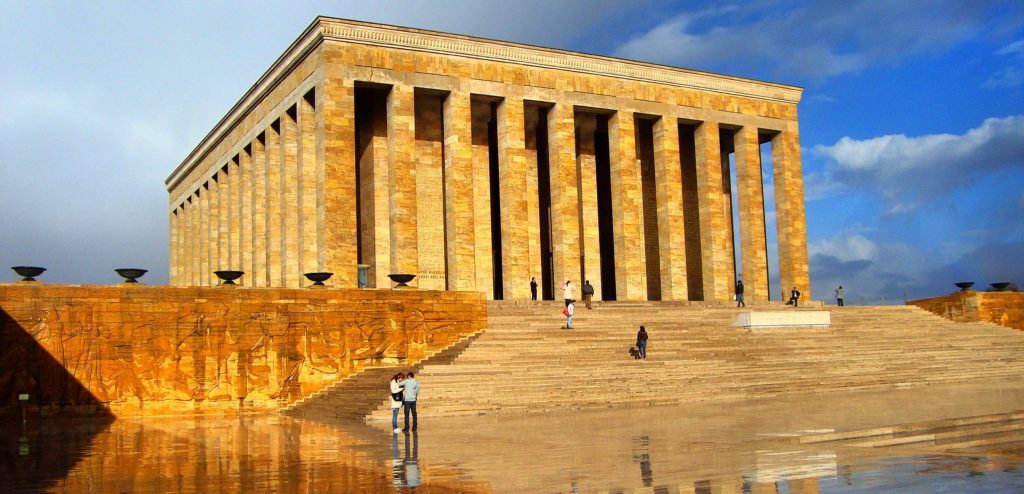
Click here to read the article: In pictures: How Turkey mourned the loss of its founding father Atatürk.
Today, Atatürk is remembered not only as a visionary statesman but also as an enduring symbol of Turkey’s spirit of independence and modernization, and his legacy continues to inspire the Turkish people.

Sources: Atatürk by Andrew Mango/Mustafa Kemal Atatürk and the founding of the Turkish Republic

